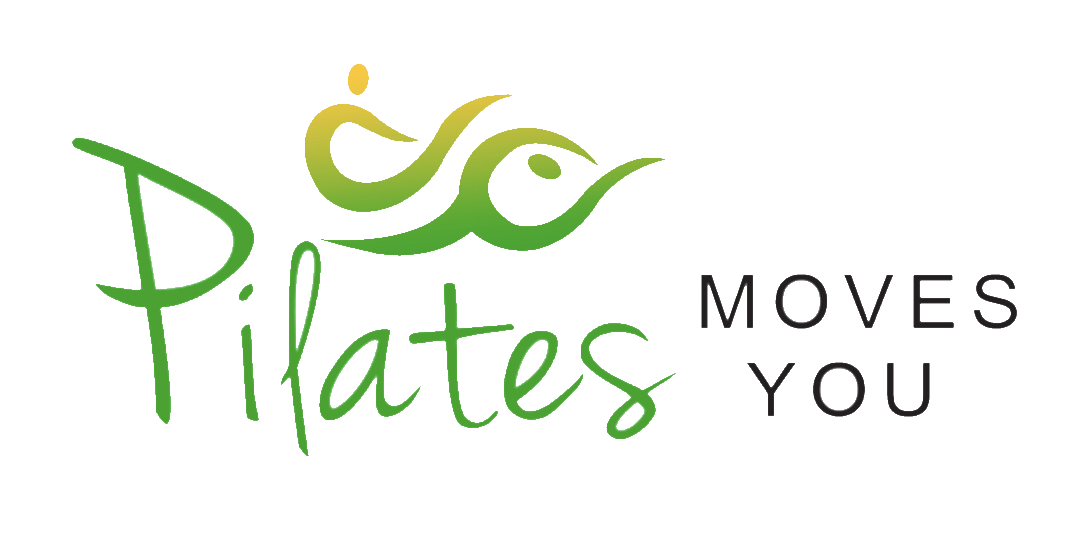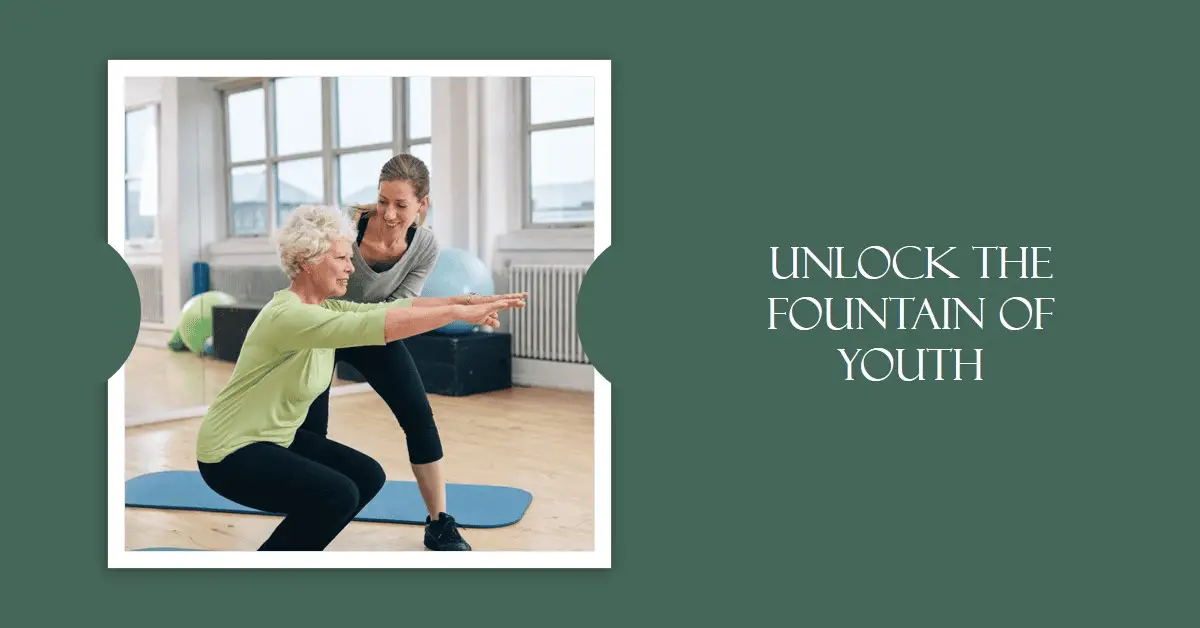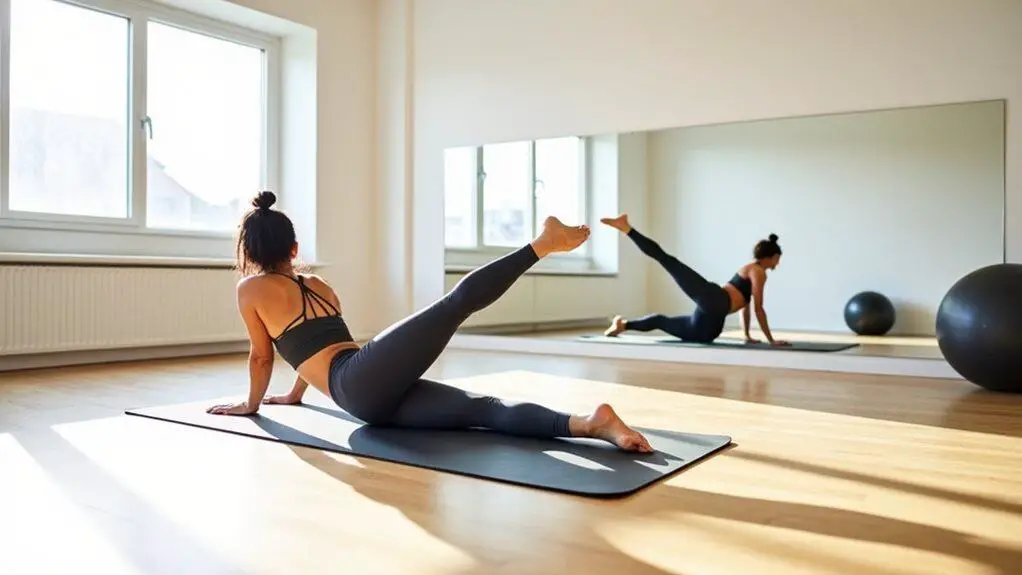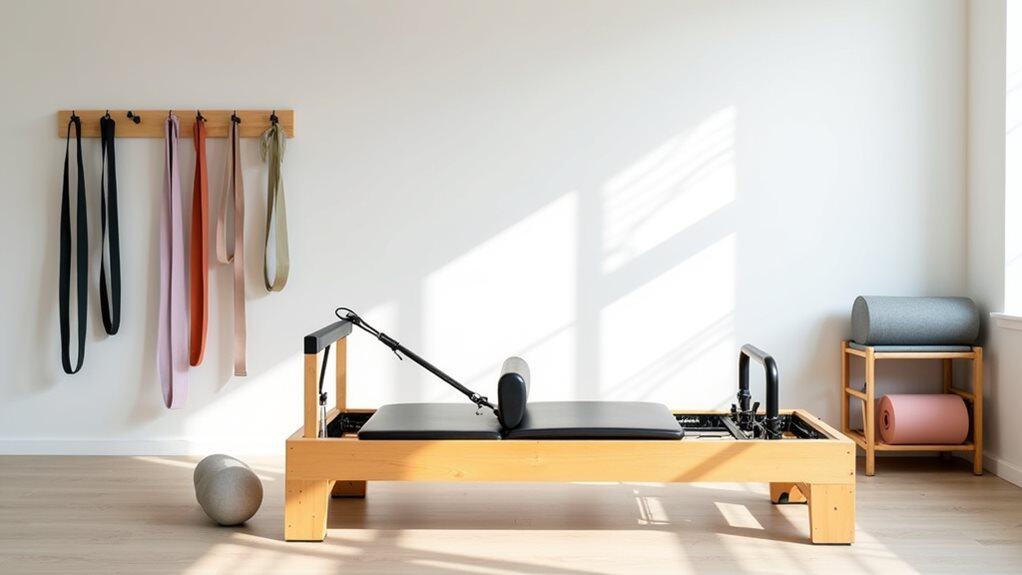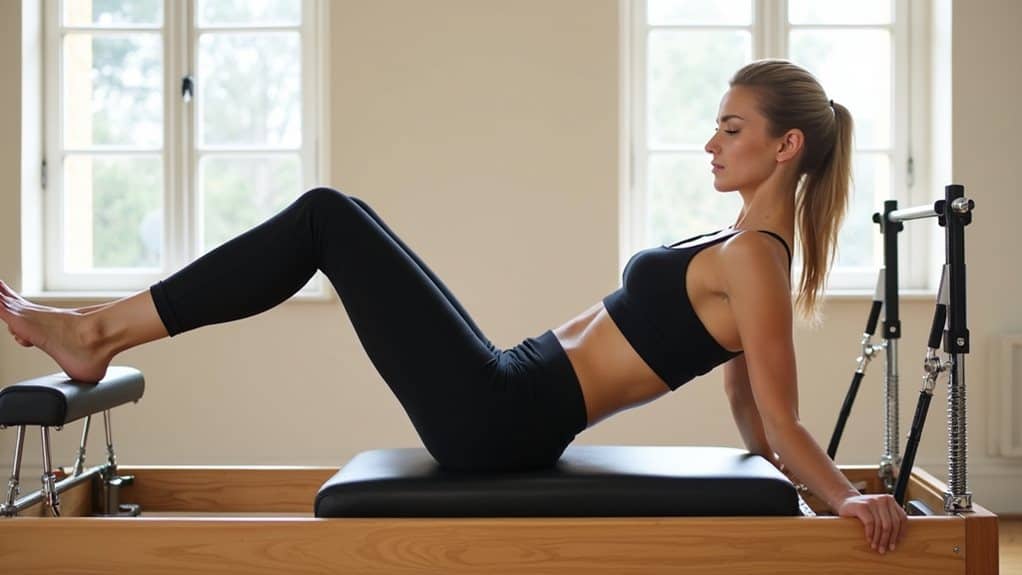Are you tired of feeling sluggish and stiff? Do you long for the days when your body moved with ease and grace? Pilates for seniors could be the key to unlocking the fountain of youth.
This low-impact exercise is designed to improve your flexibility, strength, and balance while also reducing stress. Pilates has been around for over a century, but it’s only in recent years that it’s become popular among seniors.
And for good reason – it’s an effective way to tone your muscles without putting undue strain on your joints. Additionally, many of the exercises are performed lying down or sitting, making it accessible to those with limited mobility.
Whether you’re new to exercise or looking to switch up your routine, Pilates is a great option that will leave you feeling rejuvenated and energized.
Introduction to Pilates for Seniors
You’re about to discover a fantastic way to exercise that’s specifically designed for those who are in their golden years. Pilates is an excellent workout that can help seniors improve their flexibility, balance, and overall strength.
The techniques used in Pilates are gentle and low-impact, making them perfect for older individuals who may have mobility issues.
One of the benefits of Pilates for seniors is that it can be customized to meet the specific needs of each individual. Whether you want to work on your core strength or improve your posture, there’s a Pilates exercise that can help you achieve your goals.
In addition, because Pilates focuses on using controlled movements and breathing techniques, it can also help reduce stress and promote relaxation.
With all these benefits in mind, it’s no wonder why more and more seniors are turning to Pilates as a way to stay active and healthy well into their golden years!
Benefits of Pilates for Seniors
The advantages of practicing Pilates as an older adult are numerous and can have a significant impact on your mobility, flexibility, and overall physical wellbeing. Here are some health benefits that you can enjoy by incorporating Pilates into your routine:
-
Improved balance and coordination: Pilates exercises focus on strengthening the core muscles, which helps improve balance and coordination.
-
Reduced risk of injury: By increasing flexibility and improving posture, Pilates can help reduce the risk of falls or other injuries.
-
Pain relief: Pilates exercises can alleviate joint pain by increasing strength in supporting muscles.
-
Better circulation: The controlled movements used in Pilates increase blood flow throughout the body, leading to better circulation.
In addition to physical benefits, there are cognitive benefits to practicing Pilates as well. By focusing on breathing techniques and mind-body connection during exercise, you may experience improved mental clarity and reduced stress levels. With consistent practice, you may also notice an improvement in your memory and concentration.
Now that you know about some of the many benefits of Pilates for seniors, let’s dive deeper into how it works.
How Pilates Works
Get ready to discover the inner workings of this popular exercise routine and how it can help you feel stronger, more balanced, and mentally sharp.
The Pilates principles are based on developing a mind-body connection that emphasizes breathing, control, precision, concentration, centering, and fluid movements. It’s not about quantity but quality of movement that improves the overall function of your body.
The exercises in Pilates are designed to target specific muscle groups while incorporating full-body movements that enhance flexibility and range of motion. The mind-body connection allows you to engage your core muscles while moving other parts of your body which helps in improving posture and balance.
With regular practice, Pilates can make everyday activities easier by increasing strength and coordination. This type of exercise routine is perfect for seniors who want to maintain their independence as they age.
Now let’s move forward into discussing different types of pilates exercises without wasting any more time.
Types of Pilates Exercises
You may be wondering what types of Pilates exercises are available to you.
There are three main types: Mat Pilates, Reformer Pilates, and Chair Pilates. Mat Pilates is done on a mat with no equipment, while Reformer and Chair Pilates incorporate specialized machines for added resistance and support.
Mat Pilates
Mat Pilates is a great way to strengthen your core and get in shape without putting too much strain on your joints, so you can hit two birds with one stone. As a senior, it’s important to maintain an active lifestyle while also taking care of your body.
Here are some benefits of mat pilates for seniors:
- Improves flexibility and balance
- Helps alleviate joint pain
- Enhances overall strength and endurance
- Reduces stress and promotes relaxation
If you’re new to mat pilates or want to practice at home, here are some tips:
- Start with beginner-level exercises before progressing to more advanced ones.
- Use proper form and alignment to avoid injury.
- Focus on breathing throughout the movements.
- Incorporate modifications as needed for any physical limitations.
Now that you know about mat pilates, let’s move on to the next topic: reformer pilates.
Reformer Pilates
Reformer Pilates is a challenging yet rewarding way to improve your fitness and core strength. You can perform a variety of exercises that target different muscle groups in your body using the reformer machine. Reformer variations include leg circles, footwork, and spine stretches. These exercises will help you increase your flexibility, balance, and coordination.
One of the benefits of doing Reformer Pilates is that it provides low-impact exercise for seniors who may have joint pain or arthritis. You can adjust the resistance level to suit your fitness level and progress at your own pace. Reformer Pilates can also help improve posture and reduce back pain by strengthening the muscles in your core and spine.
Transitioning into chair pilates is another great way to incorporate Pilates into your daily routine. With just a chair as equipment, you can perform simple yet effective exercises that will benefit both your mind and body.
Chair Pilates
Get ready to try Chair Pilates, an easy and accessible form of exercise that can improve your flexibility and balance. This modified version of traditional Pilates is perfect for seniors who may have difficulty with standing exercises or using the Reformer. With Chair Pilates, you’ll be able to perform a variety of poses while seated on a sturdy chair.
Here are some benefits you can expect from Chair Pilates:
- Improved posture and alignment
- Increased core strength
- Enhanced flexibility through modified poses
- Reduced stress levels through breathing techniques and relaxation methods
With all these benefits, it’s no wonder why more seniors are turning to Chair Pilates as a way to stay active and healthy.
But before we dive into getting started with Pilates for seniors, let’s explore some other ways you can modify your practice with different equipment.
Getting Started with Pilates for Seniors
When it comes to starting Pilates as a senior, it’s crucial to find a qualified instructor. Look for someone who’s certified and has experience working with seniors.
Choosing the right equipment, such as a mat or reformer, can make all the difference in your practice.
Remember to start slowly and progress safely, listening to your body and adjusting accordingly.
With patience and guidance, you can enjoy the many benefits of Pilates at any age.
Finding a Qualified Instructor
Discovering an experienced Pilates teacher who specializes in working with mature bodies is crucial for achieving optimal results. When searching for a qualified instructor, there are a few things to keep in mind:
-
Qualifications needed: Make sure the instructor has completed a comprehensive Pilates certification program from a reputable organization.
-
Verifying credentials: Ask about their experience working with seniors and if they have any specialized certifications or training.
-
Personal approach: Look for someone who takes the time to understand your individual needs and limitations.
-
Positive reputation: Seek out recommendations from friends, family, or healthcare professionals.
A knowledgeable and patient instructor can help you safely navigate the movements of Pilates and adapt them to your unique body type and fitness level. Once you’ve found the right teacher, they can guide you through selecting appropriate equipment that’ll enhance your practice and support your body’s needs.
Choosing the Right Equipment
Picking the perfect gear for your Pilates routine is like finding a needle in a haystack, but with the right guidance from your instructor, you can hit the nail on the head and find equipment that suits you to a T.
When choosing the right equipment, consider your body type, fitness level, and specific needs. Pilates Equipment Features vary greatly, so it’s important to take these factors into account when making your decision.
Some of the most popular Pilates equipment includes reformers, chairs, barrels, and balls. Reformers are great for those who want to work on their core strength and balance. Chairs are ideal for those who need extra support during exercises such as lunges or squats. Barrels help with spinal alignment while also toning muscles in the back and legs. Balls are useful for stretching and strengthening many parts of your body at once.
With so many options available, it’s important to choose equipment that aligns with your goals and abilities. Remember: safety should always come first!
As you start incorporating new equipment into your routine and increasing intensity levels gradually over time, remember that slow progress is better than no progress at all! By listening closely to what your body tells you during each session – whether it be through slight discomfort or muscle tension – you can ensure safe progression while unlocking the fountain of youth with Pilates exercises designed specifically for seniors!
Starting Slowly and Progressing Safely
Before you jump into a full-blown Pilates workout, it’s important to start slowly and progress safely in order to avoid injury and achieve the best results. As a senior, your body may not be able to perform some of the more advanced Pilates exercises right away. That’s why safe modifications are crucial for preventing strain or sprains on your muscles.
To begin with, focus on building strength gradually in your core muscles – these are the ones that support your spine and pelvis. This will help improve posture, balance, and overall stability which can reduce the risk of falls. Once you feel comfortable with basic exercises like pelvic tilts or leg lifts, try incorporating small props like resistance bands or light weights to challenge yourself.
Remember that progress takes time and patience; don’t push yourself too hard too soon!
As you gain confidence and proficiency in Pilates exercises, there are many tips for practicing Pilates that can help you get the most out of each session. Maintaining proper form by engaging your core muscles throughout each exercise is essential for strengthening those deep stabilizing muscles. Additionally, focusing on mindful breathing can help calm your mind while also providing oxygen to working muscles.
With these tools at hand, unlocking the fountain of youth through Pilates is within reach!
Tips for Practicing Pilates
If you’re looking for ways to improve your Pilates practice, these tips can help take your fitness journey to the next level.
First, consider using Pilates modifications and props to better support your body during exercises. For example, if you have difficulty with balance or need extra support for your back, a stability ball can provide added assistance. Similarly, resistance bands can be used to make certain exercises easier or harder depending on your needs.
Secondly, focus on breathing and proper form throughout each exercise. Inhale deeply through your nose and exhale through pursed lips as you engage in each movement. This not only helps with relaxation but also ensures that you maintain control of the exercise while minimizing strain on the joints and muscles.
Lastly, don’t push yourself too hard too soon. Take breaks when needed and gradually increase intensity as your body becomes more accustomed to the movements. Remember that safety comes first in any fitness routine.
As you continue with your Pilates practice, it’s important to keep common concerns and precautions in mind. By doing so, you can prevent injury and ensure that you’re getting the most out of each session without pushing yourself past what’s healthy for your body.
Common Concerns and Precautions
If you have joint pain or limited mobility, don’t let that stop you from practicing Pilates. There are modifications and alternative exercises that can be tailored to your needs.
Osteoporosis and bone health are also important considerations when practicing Pilates, so make sure to discuss any concerns with your doctor before starting a new exercise routine.
Joint Pain and Limited Mobility
You may be experiencing joint pain and limited mobility, but there are ways to improve your overall health and well-being. Pilates for seniors can help alleviate joint pain, increase flexibility, and improve balance. Here are some specific benefits of Pilates for seniors with joint pain and limited mobility:
- Pilates is a low impact form of exercise that reduces stress on the joints.
- Pilates includes specific exercises that target problem areas such as knees, hips, shoulders, and back.
- Regular practice of Pilates can help increase flexibility in muscles and joints.
- Pilates can help manage arthritis by reducing inflammation and increasing range of motion.
In addition to these benefits, Pilates also emphasizes proper alignment which can reduce strain on the body. With regular practice of pilates for seniors, you may find yourself moving more easily without as much discomfort. And don’t worry if you’re new to exercise or haven’t been active in awhile – modifications can always be made to accommodate different levels of ability.
Now let’s move on to osteoporosis and bone health – another important aspect of aging that pilates has been shown to benefit.
Osteoporosis and Bone Health
If you’ve been struggling with joint pain and limited mobility, Pilates can help alleviate these symptoms. But did you know that Pilates can also improve your bone health?
Osteoporosis is a common condition among seniors, in which the bones become weak and brittle due to loss of calcium and other minerals. This can lead to fractures and falls, which can be dangerous for older adults.
Fortunately, there are ways to prevent osteoporosis and improve bone health through nutrition and supplementation. Calcium, vitamin D, and magnesium are all essential for strong bones. You should aim to consume these nutrients through a balanced diet or supplements if necessary. Additionally, fall prevention strategies such as removing tripping hazards from your home and improving balance through exercise can reduce the risk of fractures.
By incorporating Pilates into your fitness routine, you not only improve joint mobility but also promote bone health. Remember to consult with your doctor before starting any new exercise program or making changes to your diet or supplementation plan.
Consulting with Your Doctor
Consulting with your doctor is imperative before starting any new exercise regimen or altering your nutrition and supplement plan, in order to ensure safety and effectiveness. As a senior, it’s important to take into account any pre-existing medical conditions you may have, such as heart disease or arthritis. Your doctor can help determine if Pilates is the right choice for you and provide guidance on how to modify exercises to fit your individual needs.
Before beginning a Pilates practice, it’s essential to understand the benefits and risks associated with this form of exercise. Some potential benefits include improved flexibility, balance, and posture, while some risks may include muscle soreness or injury if proper form isn’t maintained. Additionally, precautions should be taken for those with certain medical conditions or injuries.
Preparing for a safe and effective Pilates practice involves discussing any concerns or questions with your doctor beforehand and finding an experienced instructor who can guide you through modifications as needed.
With proper preparation and consultation with your doctor, Pilates can be an excellent way to rejuvenate your body as a senior. Now that we’ve discussed the importance of consulting with your doctor before starting a new exercise regimen, let’s dive into some next steps for incorporating Pilates into your daily routine.
Conclusion and Next Steps
In conclusion, taking steps towards a healthier lifestyle through regular exercise can greatly improve one’s overall well-being and quality of life. As a senior, incorporating Pilates into your daily routine is an excellent way to rejuvenate your body and unlock the fountain of youth.
Here are three important next steps you can take to get started:
- Consult with your doctor to ensure that Pilates is safe for you and that any modifications or precautions are taken.
- Find a certified Pilates instructor who has experience working with seniors and can provide personalized guidance and support.
- Make a commitment to consistency by setting achievable goals and scheduling regular Pilates sessions into your week.
Remember, it’s never too late to start taking care of yourself and investing in your health. With patience, dedication, and the right mindset, you can discover the many benefits of Pilates for seniors and enjoy an active, fulfilling life for years to come.
Frequently Asked Questions
Can Pilates for seniors help with specific medical conditions?
Improving mobility and reducing pain are just two of the many benefits that pilates can offer seniors who suffer from medical conditions. Pilates is a low-impact exercise that focuses on building strength, flexibility, and balance through slow, controlled movements.
For seniors with limited mobility, modifications can be made to make the exercises more accessible while still being effective. By practicing pilates regularly, seniors can improve their overall health and well-being, which in turn can lead to greater independence and a renewed sense of freedom.
So whether you’re living with arthritis or recovering from an injury, incorporating pilates into your routine could be just what you need to feel better and live life to the fullest.
Is Pilates for seniors only for those who are already physically fit?
You don’t have to be a fitness guru to reap the benefits of pilates for seniors. Don’t let the misconception that it’s only for those who are already physically fit hold you back.
In fact, there are modifications for limitations and benefits for beginners! Pilates can help improve flexibility, balance, and strength in a gentle yet effective way.
Whether you’re dealing with arthritis or just looking to stay active as you age, pilates can be an excellent addition to your routine. So don’t be afraid to give it a try – take the first step towards freedom of movement today!
How often should seniors practice Pilates?
Seniors who regularly practice Pilates can experience a multitude of benefits, including improved balance, increased flexibility, and reduced joint pain.
To stay motivated, it’s important to set achievable goals and track your progress. You can also try incorporating different types of Pilates exercises into your routine to keep things interesting.
Remember, consistency is key when it comes to seeing the benefits of Pilates for seniors. Even practicing just a few times a week can make a significant difference in your overall physical health and well-being.
Don’t let age hold you back from experiencing the freedom that regular Pilates practice can bring to your mind and body.
Are there any age restrictions for practicing Pilates?
So, you’re wondering if there are any age restrictions for practicing Pilates?
Well, let me ask you this: do you believe that just because the number on your birth certificate is higher than others, it automatically means you can’t try something new?
Age limitations are merely a societal construct. In fact, Pilates can be an excellent form of exercise for elderly beginners as it focuses on low-impact movements that improve flexibility, balance and core strength.
Not to mention the mental benefits of stress reduction and increased mindfulness.
So don’t let anyone tell you that age holds you back from trying something new. Your body may surprise you with what it’s capable of!
What equipment is needed for practicing Pilates for seniors?
To practice Pilates for seniors, you’ll need a few essential pieces of equipment. Resistance bands and yoga blocks are great additions to your workout routine since they can help you achieve deeper stretches and build strength.
It’s crucial to have modifications and variations available for those with different needs. Having these tools on hand can make all the difference in adapting Pilates for seniors.
Along with these essentials, it’s also important to have an experienced instructor who’s patient and knowledgeable about adapting exercises for seniors.
With the right equipment and guidance, practicing Pilates can be a liberating experience. It can help you regain control over your body and improve your overall quality of life.
Conclusion
Congratulations! You’ve taken the first step towards unlocking the fountain of youth and rejuvenating your body with Pilates for seniors.
By incorporating this gentle yet effective exercise routine into your daily life, you can improve your overall health and well-being.
Think of Pilates as a key to unlocking the door to a more youthful, energetic self. With consistent practice, you can strengthen your core, increase flexibility, improve balance and coordination, and even alleviate joint pain.
It’s like turning back the clock on your body! So don’t wait any longer – start practicing Pilates today and experience the benefits for yourself.
Remember to go at your own pace, listen to your body’s needs, and always consult with a healthcare professional before beginning any new exercise program.
With patience and dedication, you’ll be amazed at what you can achieve with Pilates for seniors.
